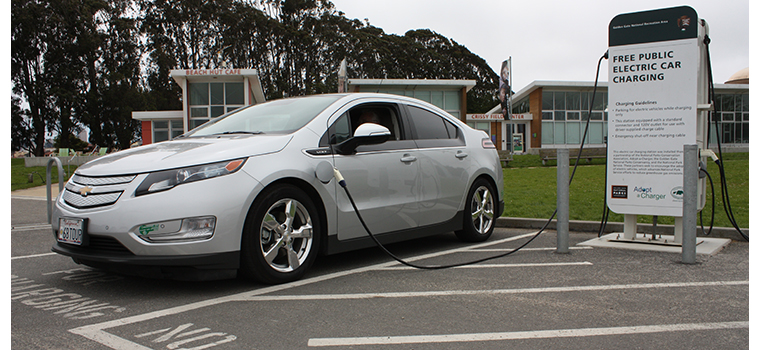In the decades since the 1960s, the environmental movement has taken flight and battled to ensure that generations to come don't inherit a broken-down planet.

SF Environment
BY BILL PICTURE
Published: June, 2017
In the decades since the 1960s, the environmental movement has taken flight and battled to ensure that generations to come don’t inherit a broken-down planet.
The latest administration, however, is threatening to undo that movement’s efforts to save mankind from itself. The country’s environmental regulations, this administration claims, impede the ability of American businesses to grow and flourish, and threaten the country’s economic viability.
To that flawed logic, San Francisco says, “No way!” Mayor Edwin Lee recently signed a new ordinance requiring all new buildings in San Francisco to be outfitted with sufficient electrical infrastructure to simultaneously charge electric vehicles (EVs) in up to 20 percent of on-property parking spaces. Take that, Donald!
Mayor Lee said in a written statement, “As the President continues to signal that his administration will roll back fuel efficiency standards and efforts to reduce vehicle tailpipe emissions, San Francisco is leading the charge for zero emission electric vehicles.”
Forbes reported earlier this year that sales of electric vehicles (EVs) in the United States had jumped 37 percent in 2016, with Californians purchasing half of all the EVs sold in the United States last year. The San Francisco Bay Area is one of the fastest-growing markets for EVs, and a reported 286,000 EVs now traverse the Golden State’s roads and highways.
“Cost, low mileage and lack of options used to be the main reasons people didn’t consider EVs when shopping for a car,” says Barry Hooper of the San Francisco Department of the Environment’s Green Built Environment Team. “Costs have come down a lot, the new EVs can travel up to 200 miles on a single charge, and there’s a car to suit just about every taste. Even if you’re in the market for a used car, there are EV options now available to you, so those issues have been addressed by automakers. Convenience though, or the perceived lack of it, is still an obstacle for some.”
And in terms of convenience, the number of public charging stations has increased significantly nationwide. San Francisco’s Public Utilities Commission has added dozens in recent years, and neighboring counties have followed suit. Thanks to such efforts, EV owners across the country, the majority of whom live in metropolitan areas, can now top off (often at no charge) at parking lots, garages, supermarkets and shopping malls they typically frequent.
But with EV sales increasing at the pace they are, the demand for charging stations could soon outweigh the supply. San Francisco’s “EV readiness” ordinance aims to promote zero-emission trans-portation by helping to ensure that EV owners never have to go too far to juice up their rides.
When the law goes into effect next January, enough circuits must be exist starting the day the building is inhabitable to install charging stations for 10 percent of parking spaces, with the capability to expand as needed up to 20 percent.
“It’s much more cost efficient to wire than it is to rewire,” Hooper said. “It’s cheaper to work the infrastructure for the charging stations into the cost of constructing a building than it is to go back after a building is fully built and try to add the infrastructure.”
Hooper expects the new requirement will prove to be a draw for existing EV owners shopping for a new home or commercial space. That should make developers happy. And for property-hunters on the fence about buying an EV, knowing they can have access to on-site charging could help persuade them to take the zero-emission leap.
San Francisco Supervisor Katy Tang said, “We need to move our city and the world forward by making electric vehicle usage more accessible to everyone. I am proud that San Francisco is leading the charge on this effort, and encouraging more San Franciscans to choose clean vehicles.”

In January, new buildings in San Francisco must be outfitted with sufficient electrical infrastructure to simultaneously charge electric vehicles in 10 to 20 percent of on-property parking spaces. SF Environment

